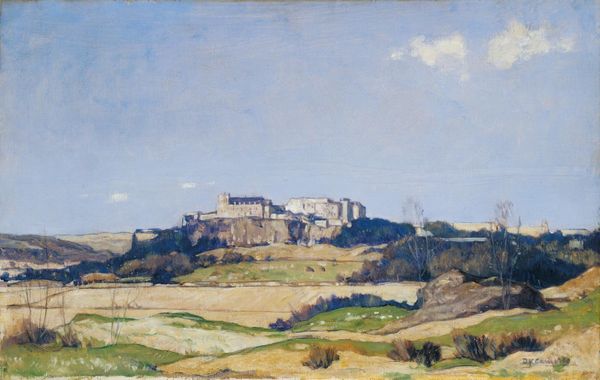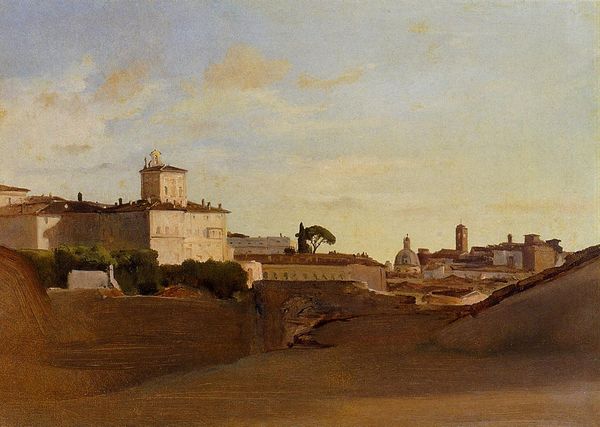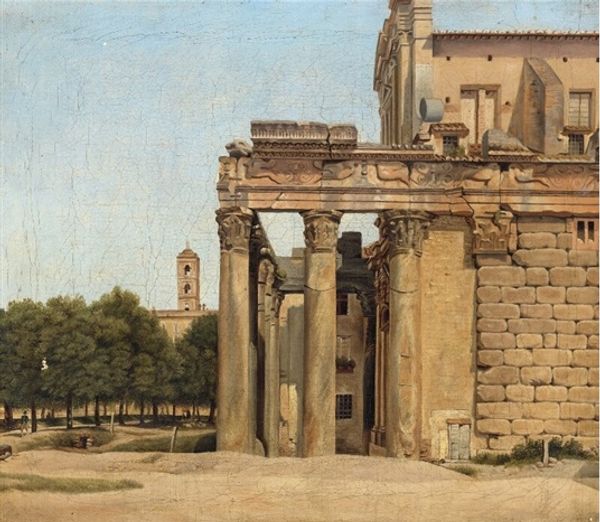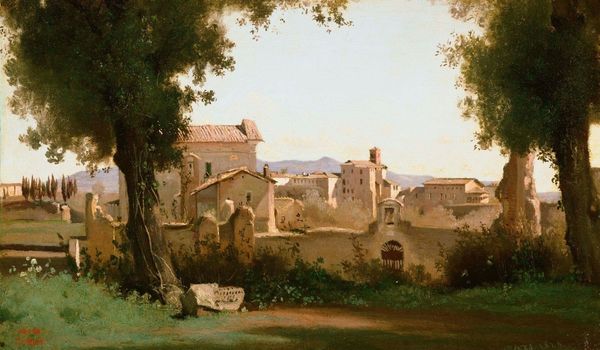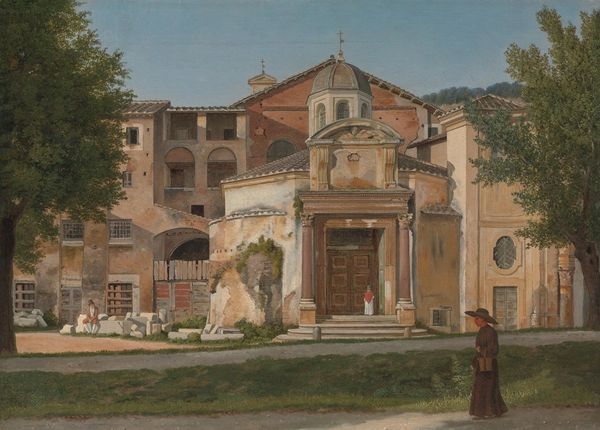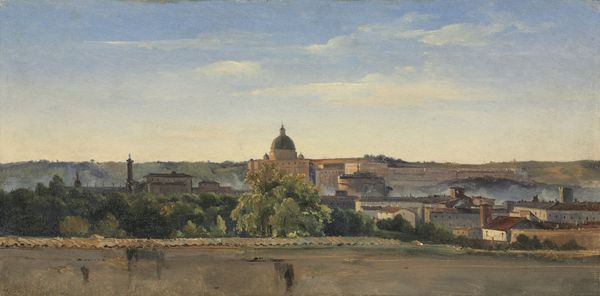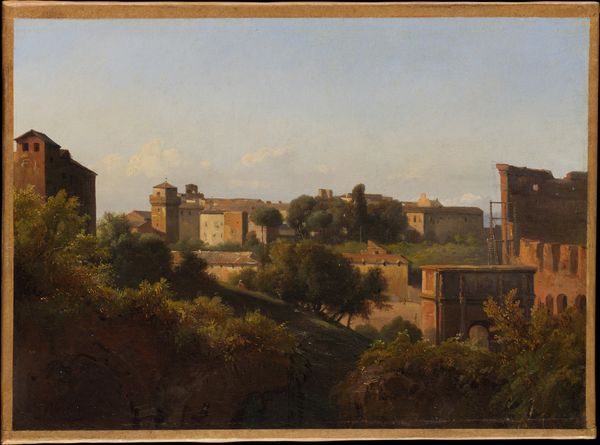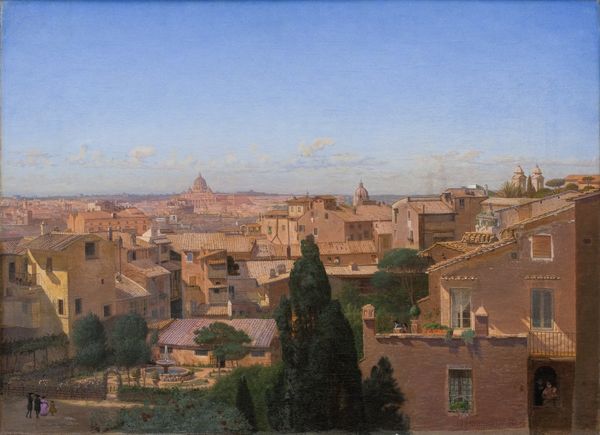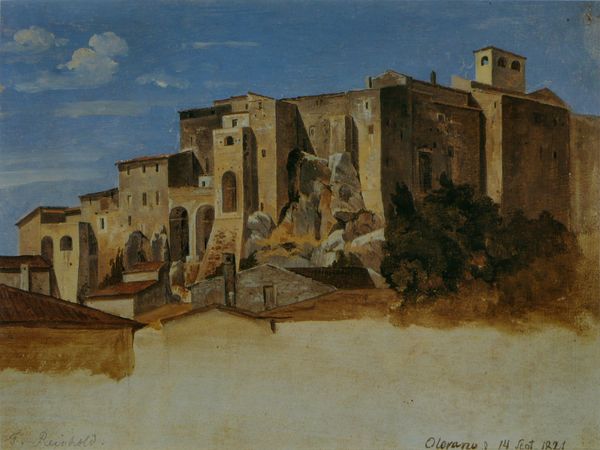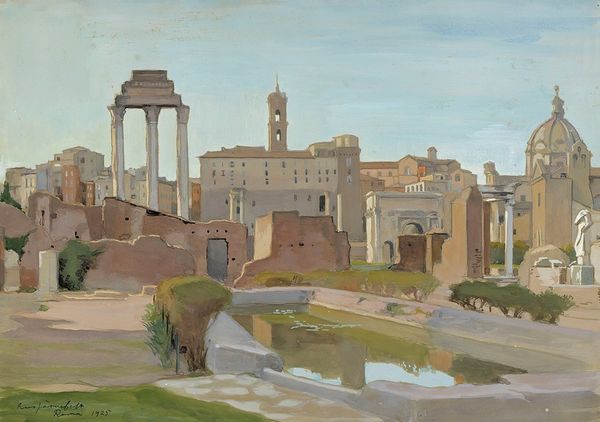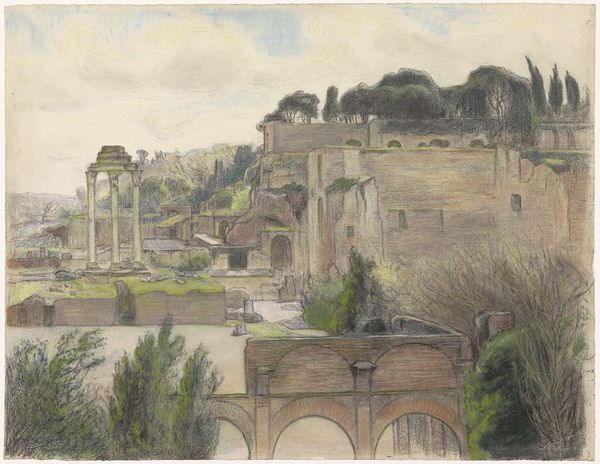
painting, oil-paint
#
neoclacissism
#
painting
#
oil-paint
#
landscape
#
oil painting
#
cityscape
Copyright: Public Domain: Artvee
Editor: This is Christoffer Wilhelm Eckersberg's "Porta Angelica and Part of the Vatican," painted in 1813, using oil paint. I'm struck by the clear light and the way the architectural details are rendered so precisely. What’s your perspective on this piece? Curator: As a materialist, I immediately look at the means of production embedded within this representation. Consider the labor required to quarry, transport, and dress the very stone that forms the Porta Angelica and the Vatican walls. How does Eckersberg's smooth, almost polished technique obscure or reveal that material history? Editor: That's a really interesting point. I was focusing on the image itself, but now I’m thinking about the work that went into creating the structures depicted. How does the oil paint itself play into this material analysis? Curator: Precisely! Oil paint, a product of its time, involved the grinding of pigments, the extraction of oil, and the labor involved in its distribution and sale. Eckersberg's mastery of this medium allowed him to meticulously depict the stone, the light, the shadow. How does this level of detail speak to the value placed on accurate representation and the labor involved in achieving it? Editor: So, the painting itself becomes a record of both the subject's construction and its own creation. Does the choice to paint a cityscape rather than a portrait or historical scene also contribute to your materialist reading? Curator: Absolutely. The cityscape highlights not individual heroes or grand narratives but rather the built environment, the infrastructure of power. Furthermore, notice how nature—the greenery, the water—is secondary to the man-made structures. This dominance reflects a particular social and economic organization. What does this visual hierarchy suggest about the values of Eckersberg's time and the patrons who commissioned such works? Editor: I hadn't considered the way the cityscape itself carries a social message. It’s fascinating to think about art as not just a representation, but as a product of material processes and social values. Curator: Exactly! By analyzing the materials, techniques, and the social context of both the artwork and its subject, we gain a deeper understanding of its meaning and its place within a larger system of production and consumption.
Comments
No comments
Be the first to comment and join the conversation on the ultimate creative platform.
